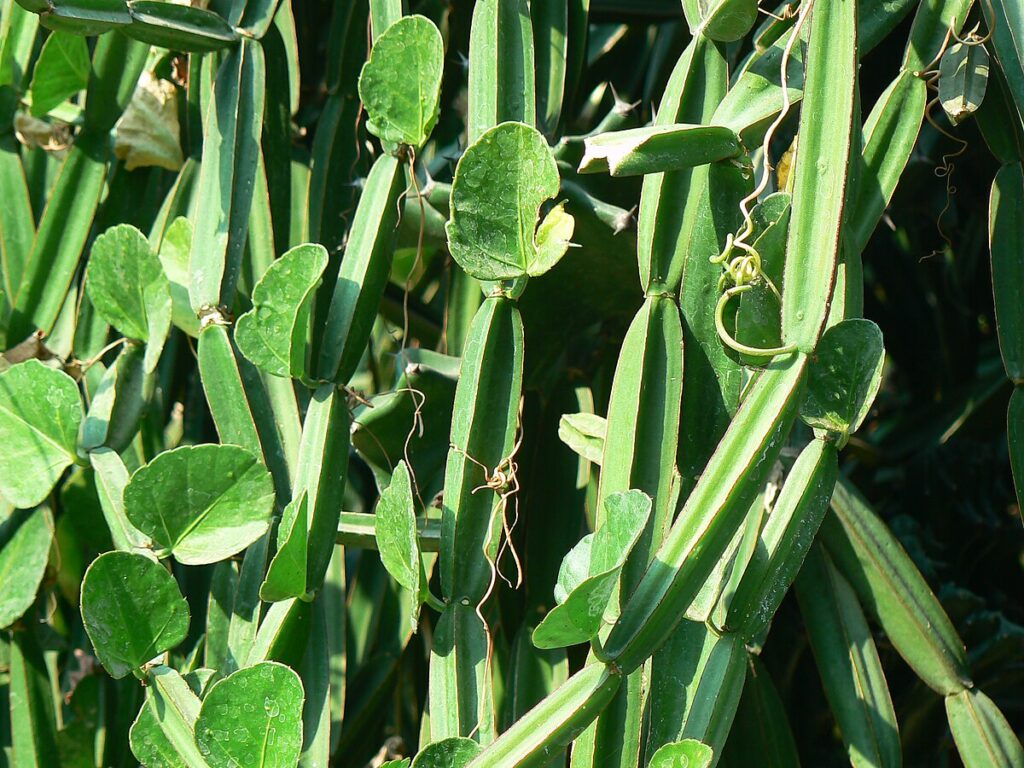Cissus quadrangularis is a perennial plant native to the tropical regions of Asia, Africa, and Arabia. Also known as Veld grape, Devil’s backbone, or Hadjod, it has been used for centuries in traditional medicine for its purported health benefits. In recent years, Cissus quadrangularis has gained popularity as a dietary supplement due to its potential therapeutic properties. In this comprehensive guide, we’ll explore the uses, benefits, side effects, and dosage of Cissus quadrangularis.
Uses
Traditional Medicine
In traditional Ayurvedic and African medicine, Cissus quadrangularis has been used to treat various ailments, including bone fractures, joint pain, digestive issues, and asthma. It has also been used topically to promote wound healing and alleviate skin conditions such as cuts, burns, and ulcers.
Sports and Fitness
Cissus quadrangularis has gained popularity among athletes and fitness enthusiasts for its purported ability to support joint health, reduce inflammation, and promote recovery from exercise-induced injuries. It is commonly used to alleviate symptoms of conditions like osteoarthritis, tendonitis, and ligament injuries.
Benefits
Joint Health
One of the most well-known benefits of Cissus quadrangularis is its potential to support joint health and alleviate symptoms of joint disorders such as osteoarthritis. Studies suggest that Cissus quadrangularis may help reduce inflammation, improve joint mobility, and promote the repair of damaged cartilage.
Bone Health
Cissus quadrangularis is also believed to have positive effects on bone health, including increasing bone density and promoting fracture healing. Some research suggests that it may help stimulate the production of collagen and other proteins involved in bone formation.
Weight Management
Some studies suggest that Cissus quadrangularis may aid in weight management by reducing appetite, increasing fat metabolism, and promoting the preservation of lean muscle mass. However, more research is needed to confirm these effects and determine the optimal dosage for weight loss.
Exercise Recovery
Cissus quadrangularis is often used by athletes and fitness enthusiasts to support recovery from exercise-induced injuries and promote faster healing of muscle and connective tissue. It may help reduce inflammation, alleviate pain, and enhance the repair and regeneration of damaged tissues.
Side Effects
While Cissus quadrangularis is generally considered safe for most people when taken at recommended dosages, some individuals may experience side effects, particularly at higher doses. Common side effects may include digestive issues such as nausea, diarrhea, and stomach discomfort.
Dosage
The optimal dosage of Cissus quadrangularis can vary depending on factors such as age, weight, health status, and the specific condition being treated. As a dietary supplement, Cissus quadrangularis is typically available in the form of capsules, tablets, or powders.
Joint Health
For joint health support, the typical dosage of Cissus quadrangularis extract is around 500-1000 mg per day, divided into two or three doses. It is often recommended to take Cissus quadrangularis with meals to enhance absorption and minimize gastrointestinal side effects.
Bone Health
For bone health and fracture healing, higher doses of Cissus quadrangularis may be used, typically ranging from 1000-2000 mg per day. However, it’s essential to consult with a healthcare professional before taking higher doses, especially for extended periods.
Weight Management
For weight management purposes, the recommended dosage of Cissus quadrangularis extract is similar to that used for joint health, typically ranging from 500-1000 mg per day. It’s important to note that Cissus quadrangularis should be used as part of a comprehensive weight loss plan that includes a healthy diet and regular exercise.
Exercise Recovery
To support exercise recovery and promote faster healing of injuries, the dosage of Cissus quadrangularis extract may be similar to that used for joint health, typically ranging from 500-1000 mg per day. However, individual responses may vary, so it’s essential to monitor for any adverse effects and adjust the dosage accordingly.
Precautions
Pregnancy and Breastfeeding
There is limited research on the safety of Cissus quadrangularis during pregnancy and breastfeeding, so it’s best to avoid using it during these times.
Medical Conditions:
Individuals with certain medical conditions such as diabetes, kidney stones, or hormone-sensitive conditions should consult with a healthcare professional before taking Cissus quadrangularis.
Drug Interactions
Cissus quadrangularis may interact with certain medications, including blood thinners, diabetes medications, and hormone therapies. It’s essential to discuss potential interactions with a healthcare provider before starting supplementation.
Conclusion:
Cissus quadrangularis is a versatile plant with a long history of use in traditional medicine for its potential health benefits. From supporting joint and bone health to aiding in weight management and exercise recovery, Cissus quadrangularis offers a range of potential therapeutic applications. However, more research is needed to fully understand its mechanisms of action, optimal dosage, and long-term safety profile. As with any dietary supplement, it’s essential to consult with a healthcare professional before starting supplementation, especially if you have underlying health conditions or are taking medications. With proper precautions and guidance, Cissus quadrangularis may offer a natural and effective way to support overall health and well-being.

